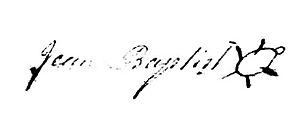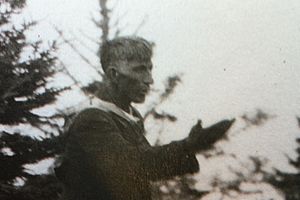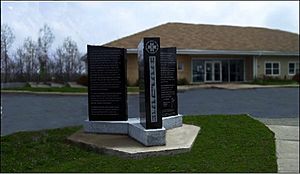Treaty Day (Nova Scotia) facts for kids
Treaty Day is a special day celebrated every year on October 1st in Nova Scotia. It's a day to remember and honor the important agreements, called Treaties, that were signed a long time ago between the British Empire and the Mi'kmaq people.
The first of these treaties was signed in 1725. Later, more agreements, known as the Halifax Treaties, were made in 1760 and 1761. These treaties helped bring an end to many years of fighting between the Mi'kmaq and the British.
For a long time, these treaties were not fully recognized by Canadian law. But in 1982, they became a formal part of the Canadian Constitution. This was a very important step! The first Treaty Day was celebrated in 1986, after the Supreme Court of Canada confirmed the Treaty of 1752. This treaty was originally signed by Jean-Baptiste Cope and Governor Peregrine Hopson. Since then, other court cases, like the one involving Donald Marshall, have also helped confirm the importance of these treaties.
October 1st was chosen for Treaty Day because the Treaty of 1752 mentioned this date. It was a day when the Mi'kmaq people would receive gifts from the Crown to "renew their friendship." Today, Treaty Day is also a time to learn more about the rich culture and history of the Mi'kmaq people for everyone in Nova Scotia. It also marks the start of Mi'kmaq History Month.
Understanding the Treaties
Historians have different ideas about how these treaties came to be.
One historian, Stephen Patterson, believes that the Halifax Treaties created lasting peace because the Mi'kmaq agreed to follow British laws instead of fighting. He suggests that the Mi'kmaq were not as strong militarily after the French were defeated, especially without supplies like guns. Because of this, he thinks the British were able to set the terms of the treaties. Patterson says these treaties defined the relationship between the Mi'kmaq and the British. While they didn't specifically talk about land or resources, they made sure both sides would follow future laws about these matters. The British also accepted that Mi'kmaq leaders would continue to have a role within British rule.
Another historian, John G. Reid, has a different view. He believes the Mi'kmaq were still very strong in the region, even after the French defeat. Because of this, he thinks the Mi'kmaq were able to truly negotiate the Halifax Treaties. Reid suggests that even though the treaty documents might say the Mi'kmaq "submitted" to the British, the real goal was a friendly and equal relationship. Mi'kmaq leaders wanted peace, fair trade for things like furs, and ongoing friendship with the British. In return, they offered their friendship and allowed some British settlements, but without giving up their land formally. Reid argues that any new British settlements would need to be discussed, and the Mi'kmaq would receive gifts for allowing them. Historian Geoffrey Plank adds that the agreements ensured the Mi'kmaq could still use the natural resources they had always relied on, like those from the coasts and forests.

Reid also points out that the Mi'kmaq's military power started to lessen when more British settlers, like the New England Planters and United Empire Loyalists, arrived in Mi'kma'ki (the Mi'kmaq traditional territory). This led to economic and cultural changes that affected the original meaning of the treaties. Reid says the Mi'kmaq sometimes tried to make sure the treaties were followed, even by threatening force, as some did during the American Revolution.
As their military strength decreased in the 1800s, Reid suggests that the Mi'kmaq's requests were about expecting the British to give them gifts for living on their land. The British did give gifts and offered educational opportunities.

Gabriel Sylliboy was a very important Mi'kmaq leader. He was the first Mi'kmaq person elected as Grand Chief in 1919. He was also the first to go to court to have the Treaty of 1752 recognized by the Supreme Court of Nova Scotia in 1929.
As mentioned, the treaties didn't become fully legal until they were included in the Canadian Constitution in 1982. A court case called R. v. Simon in 1985 changed an earlier decision from 1929 (R. v. Syliboy). The 1929 decision had wrongly said that Indigenous peoples couldn't make treaties. The 1985 decision corrected this, confirming that treaties are indeed valid. Many other court cases since 1982 have also helped uphold and clarify treaty rights.
Today, every October 1st, Nova Scotians proudly celebrate Treaty Day.



